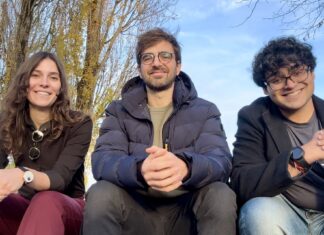HypeFactory international innovative Influencer Marketing agency
Please introduce yourself and your startup HypeFactory to our readers?
I am Regina Tsvyrova, the Chief Operating Officer of HypeFactory. We are an international innovative Influencer Marketing agency, with a focus on developing technology in conjunction with creativity for the best possible campaign and collaboration performances. We have more than one hundred employees of different ethnicities, located on different continents and that speak multiple languages. Our team of international talent managers closely work with content creators and brands to deliver enhanced campaign results across platforms like Twitch, TikTok, Instagram, YouTube, and more. HypeFactory focuses on the Tech industry, however, we provide a variety of influencer marketing services applicable to any vertical.
How did you get the idea of HypeFactory?
The idea of starting this agency came to me in a dream, much like how Mendeleev came up with the periodic table of elements. In reality, it came from experience gained through diverse networking and understanding the needs of the market we operate in. For example, we noticed that in some global regions, brands still don’t understand the power of Influencer Marketing. This inspired the idea of HypeFactory
Why did you decide to start with HypeFactory?
I was impressed by the AI that stands behind us, the speed of development, and the initial team itself. My intuition told me that such a mix of characteristics would inevitably lead to success. Those who work hand-in-hand with such technical capabilities, combined with excellent customer service, will become top of mind as the best influencer marketing agencies in the world. Not to mention, those who can meet the needs of the most demanding clients. The talent working alongside me at HypeFactory has what it takes to set the scene for how influencer marketing will be conducted in future. HypeFactory started as a result of dedicated industry professionals wanting to contribute to the dynamic uprise of the IM industry.
What is the vision behind HypeFactory?
Actually everything behind this was driven by love – love for the industry, clients, and continuous development. The global vision is to be at the forefront, testing new things first, creating trends, and ultimately becoming a standard-bearer for our company in our niche. We aim to become a one-stop-shop influencer marketing agency where any global brand or international product can come and get all the services related to working with opinion leaders – from communication platforms and large-scale ambassadorship to niche campaigns in all possible regional networks around the world.
How difficult was the start and which challenges you had to overcome?
The hardest step is always the first one. After that, I just had to do what I’m good at and passionate about. We faced many difficulties in the beginning, such as building a completely new international and efficient team and creating a technological ecosystem within the company.
Now we are at the stage where we are dealing with building a reputation and name in new markets and with new client categories. Asia is our focus for 2023, and we are also signing talents in the US and Europe for exclusive collaborations, thereby increasing the diversity of our client portfolio, expanding the profile of our classic client from gaming and IT products to working with FMCG.
Who is your target audience?
The beauty of our industry is that influencers as a sales channel are equally effective for international mobile games and for, say, mayonnaise from Bristol. Therefore, the target audience is incredibly broad, and we are ready to offer different tools depending on the client’s niche and their KPI.
What unites our clients is the amount of investment they allocate to the channel. Most of our clients are already playing big, and for them, Influencer Marketing is one of the three most important promotion channels alongside Facebook and Google, and they are willing to invest $500k or more per year in influencer partnerships.
What is the USP of HypeFactory?
24/7 Support for Global Engagement: Thanks to our international team, HypeFactory can work around the clock to launch data-driven influencer marketing campaigns across various time zones and geographic locations. Utilizing reliable social platforms, we engage international audiences for enhanced results. Our team is multi-versatile and won’t hesitate to collaborate with even 500 influencers at once, on a time crunch.
Leveraging The Power of AI: Our HypeDetect tool helps us to assess the quality, trustworthiness and performance of influencers. This assists us to better match talented personalities with the brands they’ll be representing. HypeDetect benchmarks channels and content creators based on 55 characteristics, complicated data, and makes use of the dynamics of audience development and comment authenticity. After analysis, the tool generates an Audience Quality Score and Channel Quality Score. Those superpower metrics won’t let fraud detection slip and help us make informed decisions for propper brand-influencer pairings.
Talent Management: Our Talent Management services make brand-influencer partnerships more coherent on all accounts. HypeFactory’s talent services assist marketers in establishing meaningful connections with influencers and their audiences.
Can you describe your typical workday?
My day is equally strategic and creative, sometimes turbulent – as with any business – but predominantly involves critical thinking activities. Usually, this involves Zoom meetings with the heads of different departments in our company, or with key clients, or with new promising partners. Sometimes it’s about exploring new possibilities, preparing presentations for founders, or describing new processes within the teams.
My main task is to ensure that the mechanism of our work runs like Swiss clockwork. Therefore, control and debugging. I am also the person who first understands how we can expand our service or where the market is heading. All new initiatives and directions are launched by me.
Where do you see yourself and HypeFactory in five years?
I hope we are still in hype with the turnovers and clients that we once only dreamed of. And that HypeFactory will be brought to a state where it will be a super-successful organism with truly large international recognition in narrow circles, where any competitive analysis of similar agencies will start with our name.
What 3 tips would you give to startup founders?
The most important thing in any business is people. You need to think about people and be the kind of leader that you would want for yourself someday. Set an example and don’t expect your team to be motivated if you’re not involved and proactive.
The second thing is expanding your networking. Even seemingly remote contacts can lead you to very important or even game-changing ideas or connections.
Thirdly, stay aware of your industry’s developments so that you are in the right place, at the right time, and with the right amount of luck to present your innovative industry contributions. The more you find yourself in different places at different times, the higher the chances of identifying the right moment to disrupt the market with new ideas.
Thank you Regina Tsvyrava for the Interview
Statements of the author and the interviewee do not necessarily represent the editors and the publisher opinion again.










